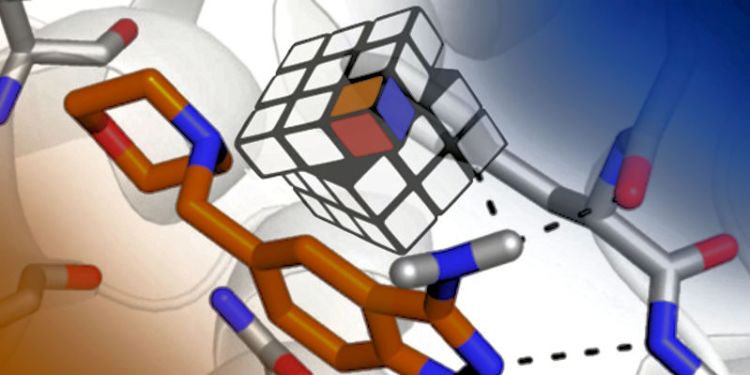Solving the Rubik's cube of medicinal chemistry

Dr Richard Foster likens his work to solving a Rubik’s Cube – albeit one that is a lot more complex than the well-known puzzle. Before joining the University, he worked as a medicinal chemist in the pharmaceutical sector. But for the last twelve years, he’s been applying the skills gained in industry to help biologists and medical researchers at Leeds develop potential new drugs.
The ‘Rubik’s Cube’ he seeks to solve involves optimising drug compounds – changing their chemical structure to give them the properties needed to work well as a treatment for a specific disease or condition. These properties include the drug’s potency, toxicity and its pharmacokinetics: how long it lasts in the body and how easily it reaches the part of the body it needs to.
Each time you change the chemical structure of the compound to improve one of these properties, it will affect the others, sometimes positively but sometimes negatively, just like a Rubik’s cube.
Dr Foster explains: “Each time you change the chemical structure of the compound to improve one of these properties, it will affect the others, sometimes positively but sometimes negatively, just like a Rubik’s cube. It can take a long time and many iterations to get the equivalent of every side in just one colour: sufficient potency, minimal toxicity and the pharmacokinetics that you require.”
In vitro testing
To determine the properties of each promising compound, Dr Foster puts them through a series of tests. These check whether and to what extent the compound will block the action of the candidate protein – its potency. They can determine how soluble the compound is and how easily it will be metabolised – key to its longevity and behaviour in the body. All of these tests are done in vitro in the laboratory, to help identify the perfect compound while reducing as much as possible the necessary animal tests undertaken before a drug enters clinical trials.
One of Dr Foster’s long-standing collaborations has seen him develop and test many different compounds in search of a new anticoagulant drug to combat thrombosis. This project is in collaboration with Professor Helen Philippou from the Leeds Institute of Cardiovascular and Metabolic Medicine in the Faculty of Medicine and Health.
Professor Philippou identified a protein, Factor Xiia, which she believed could play a role in prevention of thrombosis without the problematic side effect of abnormal bleeding. Currently, patients on anticoagulants, such as warfarin, have to be closely monitored to avoid the risk of excessive bleeding. Dr Foster, with other colleagues in medicinal chemistry, helped to identify a number of target compounds that would bind to and block the action of this protein. Since then, he has been working to optimize the compounds, and – through the spin out company LUNAC Therapeutics – hopes to see one of these progress to clinical trials.
Applying general principles
He is also applying the same techniques in collaborations with other University researchers to develop a drug to reduce blood pressure in the arteries in the lungs and a drug that aims to prevent the malaria parasite from reproducing. Dr Foster explains: “There are general principles within medicinal chemistry that we apply to change the molecular properties of the compound and the drug. Those principles can be applied irrespective of the drug target and the therapeutic area that we're working on. In industry, I worked primarily on the development of cancer drugs, but since coming to Leeds, I’ve worked on cardiovascular medicine and many other areas as well.”
There are general principles within medicinal chemistry that we apply to change the molecular properties of the compound and the drug.
Sometimes, Dr Foster works on compounds that are never intended to make it into clinical trials, but are for use solely in research. Providing scientists with a means of blocking a specific protein in the laboratory can help them to better understand the mechanism of a disease or biological process in the body. This can push the science forward and help in identifying other potential drug targets.
“In these cases, we don’t need to solve the Rubik’s cube, just make the compound good enough for research purposes, rather than perfect it,” says Dr Foster. “Though there’s always the chance that you do find something that could actually have potential as a drug treatment – and then that’s an added bonus.”
Contact us
If you would like to discuss this area of research in more detail, please contact Dr Richard Foster.

